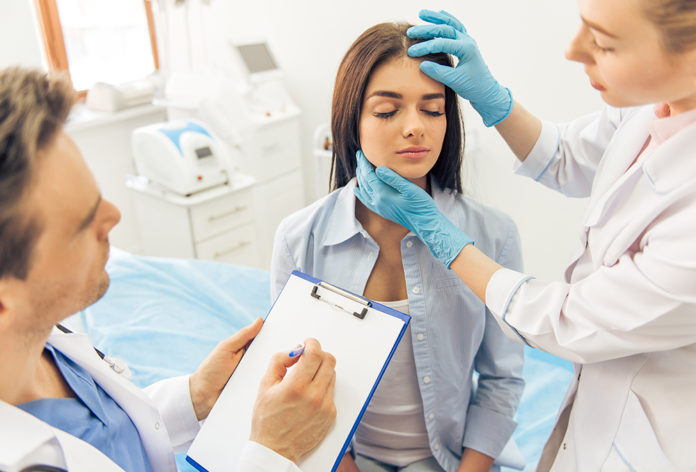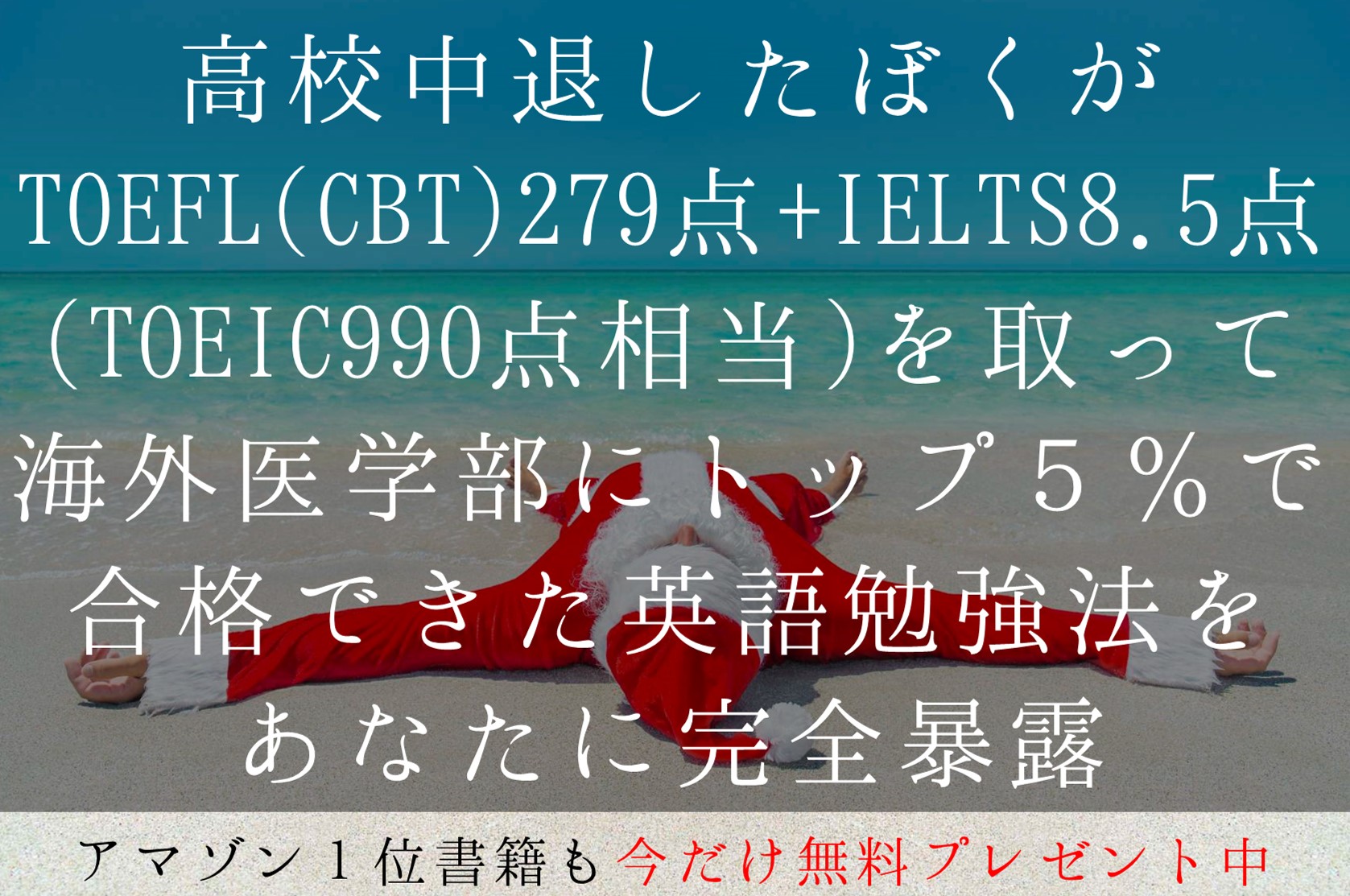これまで、オーストラリア医学部の最終学年の研修である、麻酔科、緩和ケア、腫瘍科、脳外科、へき地医療、外科、内科、救急医療の話をしてきた。
そして、次のテーマである「オーストラリアの医学部、卒業に必要な5つのこと」について話を進めている。
前々回の記事『オーストラリアの医学部、卒業に必要な5つのこと(医療行為)』では、オーストラリアの医学部を卒業するには医療行為の基本を習得しなければいけない、ということを書いた。
前回の記事『オーストラリアの医学部、卒業に必要な5つのこと(課外活動)』では、医療行為の習得だけでなく課外活動も必須、ということを書いた。
そして、3つ目のハードルとなるのが、客観的臨床能力試験である。
客観的臨床能力試験は、英語で Objective Structured Clinical Examination(OSCE)と呼ばれる。学生は、患者さん(ボランティア)と採点者(医者)がいる部屋に入り、約10分間で課された課題をこなさなければならない。
医学部最後の臨床試験であるため、最終学年で行なった研修(麻酔科、緩和ケア、腫瘍科、脳外科、へき地医療、外科(耳鼻咽喉科)、内科(循環器内科)、救急医療)だけでなく、先住民医療、眼科、老人科、リウマチ科、精神科、産婦人科、小児科など4年間すべての研修が採点の対象となる。また、たった数年の研修ですべての症例に出会うことは不可能なので、それ以外の病気については自分で学習しておかなければならない。縫合が出てくるかもしれないし、肩甲難産、憂鬱病の問診、おぉ、考え始めたらキリが無いぐらい。試験に出てくる可能性があるシナリオの数が、目眩がするほど膨大なのだ。
うちの大学(西オーストラリア大学)のOSCEは、16のシナリオ(試験中、学生が部屋から部屋へと移動するので、駅を意味するwステーションと呼ばれる)が用意されている。1つのステーションに割り当てられている時間は10分。最初の2分間で、部屋にドアに貼られているシナリオと課題を頭に入れる。2分間が過ぎると笛が鳴り、学生は部屋に入って患者さんに挨拶する。そして、8分間の間に課題を可能な限りこなす。
16のシナリオを同級生がコメント付きでまとめていたので、ここでシェア。
| 分野 | 内容 |
|---|---|
| Ophthalmology | Chemical Burn 31 year old bricklayer who presented to ED with an acutely painful red eye after recently swiping their eye with mortar (contains lime → alkali burn). Was also expected to take further Hx e.g. eye protection? Solely examiner in the room Perform VA on examiner Fundoscopy of model… how many words can see in the model? Management of chemical injury…. Had to tell examiner what you would do; URGENT OPHTHAL REFERRAL Visual Acuity Extra-occular movements Eye inspection Pupils Pressure Provide analgesia |
| General Practice | Acute Otitis Media 20 month old non-Indigenous child presented with fever and you had to speak to the Dad about symptoms. Shown images of disc bulging of R ear and L ear normal. Management Analgesia - pain stop/paracetamol R/V in a few days |
| General Practice | Breast Lump 49 year old woman from a rural town 2 hours away from hospital services presents to GP with breast lump in R breast. |
| General Practice | T2DM - lifestyle counselling 35 year old Shannon a Noongar (Aboriginal) lady who presents today for R/V of her recently diagnosed T2DM. Triggers stated: 1. Assess her compliance/progress of lifestyle changes so far (or something like that) 2. “Discuss the barriers to patient improving her glycaemic control” She is a single mother with 3 children and her mother lives with her. She works long hours at the local AMS and is sometimes too tired to cook meals. |
| General medicine | Hypercalcaemia/AKI/Delirium 73 year old man brought into ED with 2 weeks of lethargy, confusion and nausea. B/g of AF, T2DM and non-small cell lung cancer diagnosed in 2010. Examiner shows hypercalcaemia on a B/G of SCC Dx 3 years ago, increased urea and creatinine, slightly raised hyperkalaemia. Raised ALP, GGT. FBC normal, WCC normal, coagulation profile normal. ● Talk through top DDx, and why so? ● What other investigations would you have ordered ● Mgmt. of the hypercalcaemia (IVH, diuretics, bisphosphonates + calcitriol?) |
| Paediatrics | Paediatric Resuscitation 3 year old post-drowning is brought into ED by ambulance and the student nurse can help with CPR but is unsure how to perform it. Had to correct technique of student nurse as he was too slow Was also expected to bag the kid for a few cycles at my site. Nurse takes over after a couple. Was also suction available but was nothing to suction when you did Airway assessment. Some variation between stations but at mine (Ozzy Park) the defib was ‘on the way’ when you asked about it. Was a cardiac trace that showed asystole. Had to give weight appropriate adrenaline dose (20kg = 200mcg?) to get ROSC. After achieve ROSC paeds come and take over care (defib still ‘on the way’ at this point smh lol). |
| Paediatrics | Non Accidental Injury Mother presents with her 2 month child with NAI from step-father. When asked about the mechanism of injury said that she wasn’t actually there, it was the step-father looking after him alone. Generally very vague about the Hx/mechanism when asked. Baby from previous relationship, when asked Mum sometimes feels unsafe at home but okay as long as do things ‘his (the partners) way’. XR showed complete femur # |
| Surgery | Small Bowel Obstruction 60 year old Mr Parson’s has had intermittent, crampy pain (3/10) for the past 2 weeks and now has now not passed flatulence. Perform Abdo Exam and answer examiner’s questions - guy was meant to have a scar from hemicolectomy - vital signs (by bedside) were all okay, slightly hypertensive and tachycardic Get given AXR → it’s SBO - Prep the guy for theatre (drip & suck, IVH, bloods, ECG, call reg + theatre, etc.) |
| Surgery (Ear Nose Throat) | Sudden sensorineural hearing loss ● Trigger: 43 y/o lady present with acute onset of ringing and hearing loss on right ear. ● Perform rinne and weber to determine what type of hearing loss ● Questions on the different DDX of acute sensorineural loss ● Also asked about immediate + follow-up mgmt. (steroids + ENT referral + MRI/CT pretty sure) |
| Surgery / Anaesthetics | Compartment Syndrome Tibial # 6h ago for ORIF 1/7. Presents with marked escalation of pain in the affected limb. ● Compartment Syndrome - follow the WHO ladder for analgesia and management. ● Trigger was a bit vague but they were looking for you to take a quick history, go over your examination and management. Think key points were to go through the 5P’s in the limb and consider emergent fasciotomy. ● Spanner was thrown in the works for us - Examiner asked ‘if your reg said not to worry about it, put the cast back and we’ll see them tomorrow. What would your response be?’ - essentially just had to say that you wouldn’t be comfortable with that and that you should insist the patient be seen now. |
| Emergency Medicine | Breaking Bad News Mrs Jones 83 year old female is found unresponsive following a bell alarm triggered which the nurse answered. She knows nothing about the patient and wants to know if she should continue CPR. ● She had a NOF# several days ago ● ?PE ● There was a completed ED admission form and her old file underneath it which had an Advance Health Directive which states that the patient DOESN’T consent to CPR, intubation or ICU/HDU admission. ● Then the nurse turned into the daughter and you had to explain that her mother had passed away suddenly ● Essentially it was a “breaking bad news” station so I used the SPIKES format and offered time with her mother to say goodbyes, if she wanted me to call a family or friend, chaplain etc |
| Emergency Medicine | Humerus Fracture 72 year old female presents after slipping over and falling on her shoulder. She is waiting in the non-acute section of ED please perform a targeted examination and tell the examiner your management. It was a closed neck of humerus # and you had to explain to the examiner the findings on the X-Ray Management Analgesia Ortho R/V There were different types of equipment available e.g. collar n cuff, cotton sling with pins and materials for casting. You had to decide which to put on her. |
| Psychiatry | Psychosis (drug induced? FEP?) ● Young girl in 20s ● 6-8 months of paranoia/auditory delusions - can hear groups of people talking about her ● Also permeation of ego boundaries (said TV/radio were reading her thoughts or something along those lines) ● 3x cannabis/week ● Nil psych Hx, medical Hx, FHx - takes ‘some drug the GP prescribed me to help me relax’ ● Nil Sx of a mood/anxiety d/o ● I went with schizophrenia since she had first order symptoms. DIP was my second differential. Patient and examiner seemed happy with me as I was leaving so pretty sure that’s what they were looking for |
| Obstetrics and Gynaecology | Gynae Triage - Read over the patient list, prioritise and give your primary Dx, discuss the Mx of one case (SHOCK patient ?ectopic pregnancy - [pt D]) ○ YOU HAVE YOURSELF (RMO), REGISTRAR (EXAMINER), AND AN ED NURSE AVAILABLE ○ A - 48 year old lady with irregular periods. None for last 3 mo. Presents with heavy bleed. Has brought in a towel soaked with blood with her. Obs are stable. ○ B - young lady with twin pregnancy. +++ vomiting. Urinary ketones. Complaining and demanding to be seen by someone. ○ C - 17 year old with vaginal discharge and fever. Obs are stable with BP ~110/80. I got a strong sense that this was an endometritis/PID picture. ○ D - young lady with acute onset RIF pain. BP ~100/70, tachycardic, resps 20, 96% RA. |
| Obstetrics and Gynaecology | Counselling for post-dates/discuss risks and benefits of vaginal and c-section (40+5/40) ○ Just got asked a series of questions by patient regarding induction. Seemed to prompt us to go over options and discuss why going post 42 weeks would be a bad idea. |
| Oncology/Palliative Care | Lady with New York Heart Association Class IV Congestive Heart Failure ● Refer to Pall. Care after prognosis of 6-12mths to live ● Already aware of prognosis. You are there to discuss the referral to pall care ● Patient main concerns were 1) breathlessness and 2) family were not coping ● Discussed with them what pall care was and how they can help at this point - symptomatic control of breathlessness and specialised SW support for family. Essentially just answered their questions about pall care. |
次の動画は、タスマニア大学・医学部の女の子だけど、うちの大学の客観的臨床能力試験だけでなく、どこの大学でも使えるアドバイスだと思うので、ぜひ参考にしてほしい。
試験直前のツイッターがこちら。
これから、オーストラリア医学部の最終実技試験(OSCE)が、チャーリー病院で行われます。夢のスタートラインに立てるように、真剣に全力で楽しみます!それまでは、病院の裏でひっそりとお茶をすすります。 pic.twitter.com/ir2jCIaDxi
— ごとうひろみち (@iTELL_) 2018年9月21日
試験直後のツイッターがこちら。
3時間にも及ぶ実技試験は、全部で16ステーション。楽しもうと全力を尽くしたけど、小児蘇生で頭が真っ白に。OSCEは苦手分野。たぶん、追試だろうなぁ。予想以上に成績が悪ければ追試もなしで留年決定(月曜日の筆記試験が満点でも)。気持ちを切り替えるためにジョギングします。外はいい天気。
— ごとうひろみち (@iTELL_) 2018年9月21日
追伸:OSCEを終えて分かったことがある。OSCEのシナリオがより現実的なものになっている、ということだ。例えば、過去問は「心臓発作の治療法」を知っていればよかったのだが、これからのOSCEは「病院から離れたところで暮らしている心臓発作の患者さんをどうやって治療するのか」などを考え、その場で患者さんと意思疎通を図らなければならない。つまり、治療法を知っているだけではだめで、患者さんの立場に立って医療行為を行なわなければならないのだ。これは、実際のお医者さんが行なっているもので、スキルの習得までにとても時間がかかるものである。ぼくは過去問をパスできるような勉強をしていたので、正直ボロボロの成績だった。机の前で教科書を読んでいるだけでは、医学部が卒業できないようになっているのだ。しくしく。でも、人は傷つきながら学んでいくんです。
オーストラリアの医学部、卒業に必要な5つのこと
1.医療行為
2.課外活動
4.筆記試験

